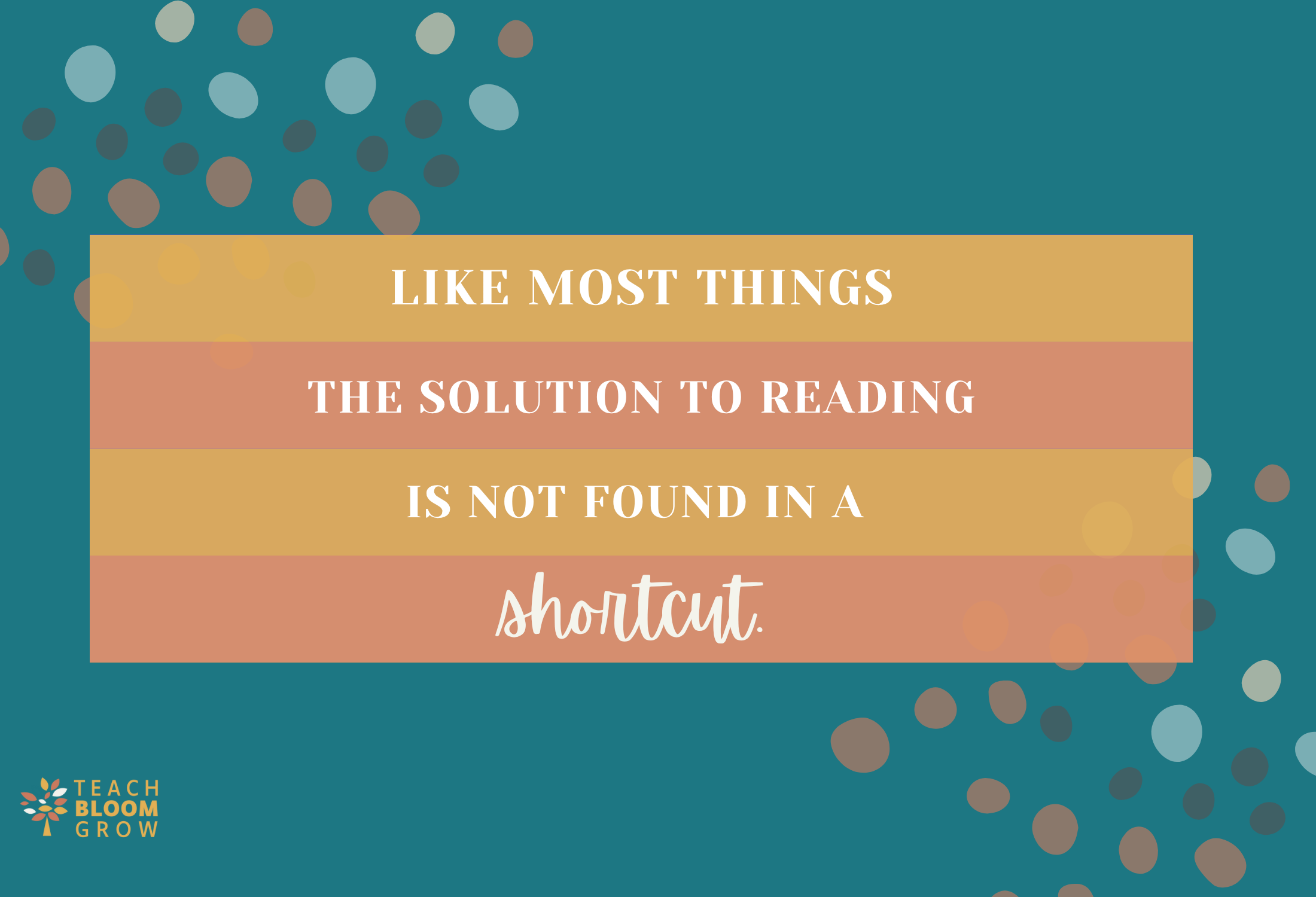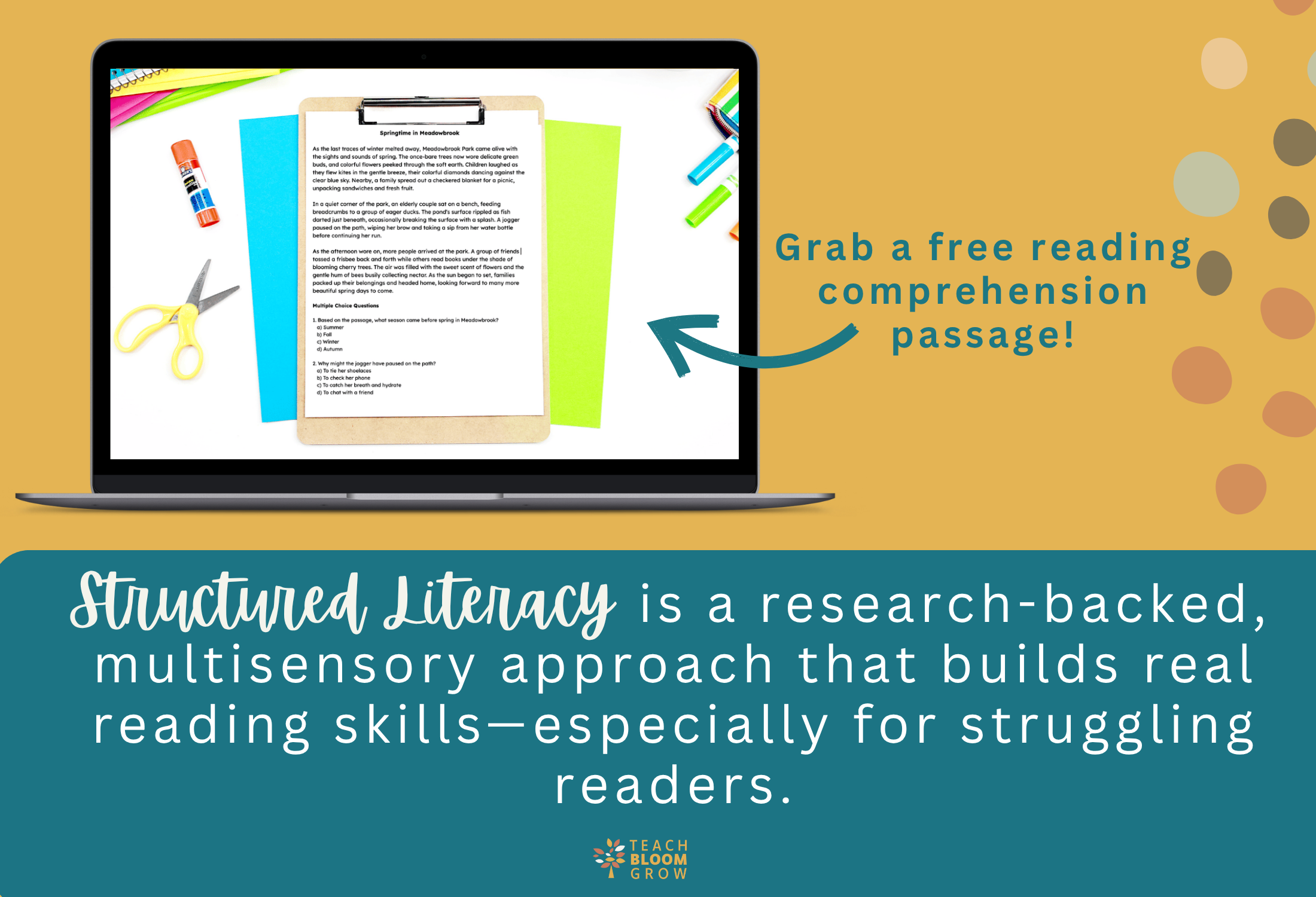The Truth About “Quick Fix” Reading Programs for Struggling Readers
If your child is struggling to read at grade level, it’s incredibly difficult not to feel the pressure. I understand how frustrating it is to watch your kids fall behind their peers and start to lose confidence. As a parent, you just want to fix it! Preferably before another school year is lost to frustration and tears. So when you come across a reading program for struggling readers that promises results in just 6 or 12 weeks, it feels like hope wrapped in a guarantee. Who wouldn’t want that?
As a parent who has been there, I understand that the promises of quick results can be incredibly tempting. Especially when they’re marketed as the “missing piece” or “science-backed breakthrough.” But like most things, the solution to reading isn’t found in a shortcut. If you are looking for a reading program for your struggling reader this post is for you! In this post, I'll walk you through the value of structured literacy, what questions to ask when choosing a program, marketing promises to approach with caution and other essential tips for supporting struggling readers.
If you’re looking for a supportive tool to start helping your child right away, I’ve got a freebie for you! It’s a reading passage complete with comprehension questions, an answer key, and a graphic organizer. This resource is differentiated for 4th and 5th grade, and works well with students who have dyslexia. Click here to grab it!
The Power of Marketing
There’s certainly no shortage of reading intervention programs for struggling readers claiming fast results.These programs are often packaged beautifully, with testimonials and guarantees that sound too good to pass up. “Your child will be reading confidently in just 8 weeks!” “Close the gap before the next report card!” Maybe they offer a free preview that looks colorful and professional, making it seem even more credible. While those promises may offer hope, it’s important to pause and look beyond the marketing. First of all, the language they use often plays on urgency, offering hope in exchange for a timeline. These types of packages are very good at telling you exactly what you want to hear at the moment you feel most vulnerable.
But the reality is there’s no magic number of weeks that guarantees results. If a child is struggling, it usually means they’ve missed foundational pieces along the way. It’s unlikely those gaps can be filled overnight, and putting that pressure on your child can lead to more frustration, not less.
The Importance of Structured Literacy
This is where Structured Literacy comes in. Backed by decades of research and endorsed by organizations like the International Dyslexia Association, Structured Literacy is a systematic, explicit, and highly effective approach to reading instruction. It’s aligned with the Science of Reading and beneficial for all learners especially those with reading challenges like dyslexia. Rather than relying on memorization or guesswork, Structured Literacy focuses on phonemic awareness, phonics, fluency, vocabulary, and comprehension. It uses a multisensory approach to help students engage with language in a way that builds real understanding. It’s not flashy, but it works.
Structured Literacy is an amazing reading program, especially for struggling readers. If you’d like to dive deeper into what Structured Literacy looks like in practice, I encourage you to explore more on this website. It’s a method that respects both the science and the child.
Understanding What to Ask
What struggling readers need isn’t a fast fix, it’s instruction that is clear, consistent, and grounded in how the brain actually learns to read. If you’re exploring intervention options, here are some questions I would encourage you to ask: Is this program aligned with the Science of Reading? Does it use multisensory methods to support how my child learns best? Will it equip my child to handle higher-level comprehension as they grow? Is this reading program going to serve my struggling reader? By asking these questions, you’ll be making sure your child isn’t just learning quick tricks, but building lasting reading skills. It will make such a difference between short term understanding and long term capabilities.
Growth That Sticks
I speak not just as an educator, but as a mom who’s been there. I spent years supporting my own children through their reading struggles. So many tears, doubts and constant worry. But with the right support, kids do catch up and they can go far! And no, we never did see giant leaps in just a few weeks. But we did see steady growth. It took a lot of consistency, patience and trust. Along with structured support, and the right reading program, my kids all grew into confident learners.
We focused on structured literacy, which is such a great program for struggling readers. It is evidence based and backed by tons of research. We also celebrated the small wins. And eventually, those small wins added up to big success. Today, those same kids are thriving in higher education and graduate level work. It wasn’t quick, but it was absolutely worth every step.
If you’re looking for something to help you along the way, don’t forget to grab my reading comprehension freebie! This free reading passage comes with questions, an answer key and a graphic organizer. This resource is differentiated for 4th and 5th grade. I also use it with my dyslexic students. Really, it is a great resource for all learners in this grade range.
Research-Backed Instruction
If you're in the thick of it right now, I want you to know this: you’re not failing, and your child isn’t falling behind beyond hope. You’re doing the right thing by seeking support. Just be careful not to trade that hope for a shortcut that fades. While some quick fixes may promise instant results, the most effective programs for struggling readers are the ones that focus on consistent, research-backed instruction. My advice would be to invest in an approach that’s steady and proven. I can tell you from my own personal experiences that while this approach isn’t quick, it is worth every step. Because real, lasting change doesn’t happen overnight, but it does happen. It just takes time, patience, and the right tools, and your child is absolutely worth it!



